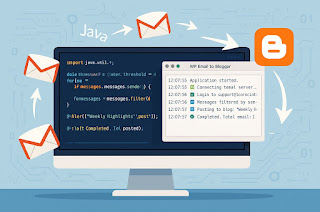Best practices in designing Architecture/solution for EDI implementation in Organization:
Following the best practices in implementation of EDI in an organization will improve business processes, reduce operational costs and minimize the risk to business continuity. A successful EDI Implementation provides visibility into core business operations that enables the optimization of business processes with increased business performance and strong return on investment.
While designing Architecture for EDI implementation in Organization we should consider the following best practices. The below mentioned are some of the best practices and these need to be implemented according to the feasibility and according to the two important constraints such as Time and Cost
1. EDI Integration services
2. EDI Implementation services
3. EDI Application Management services
While designing the EDI implementation for the organization the below few management services need to be considered
4. EDI Application Hosting Services
5. EDI Business activity monitoring Services:
Following the best practices in implementation of EDI in an organization will improve business processes, reduce operational costs and minimize the risk to business continuity. A successful EDI Implementation provides visibility into core business operations that enables the optimization of business processes with increased business performance and strong return on investment.
While designing Architecture for EDI implementation in Organization we should consider the following best practices. The below mentioned are some of the best practices and these need to be implemented according to the feasibility and according to the two important constraints such as Time and Cost
1. EDI Integration services
- Application back end systems and the data standards need to be studied and the EDI services need to be planned accordingly.
- How the inter-applications communication working? Should access the inter-applications communication requirements. How do EDI application/Tools interact effectively with applications?
- Should perform assessment and provide diagnostics approach solution. Also consider future IT/Business environment impacts. For this we should note down the constraints of the tools/software we are considering for EDI Implementation. Constraints are to be evaluated and discussed with the business and application teams to come up with an applicable solution.
- Should have the transaction flow statistics from business and application support personals and use this data in evaluating and planning of the EDI applications and servers that are needed for the current and future use. Should perform assessment and provide diagnostic approach in having different EDI application and servers
2. EDI Implementation services
- Standardizing the application documents. That is organization EDI implementation standards are to be considered while designing the architecture.
- Should consider the application access services, different communication protocols that need to be used. Does the organization require any special network facilities or any value added network services?
- How the data storage should be done? Is the data stored in database or file system? The Implementation services need to be designed accordingly.
- Should plan, evaluate and select different services and implementation facilities that are provided by the EDI tool.
3. EDI Application Management services
While designing the EDI implementation for the organization the below few management services need to be considered
- Data Archiving and retrieval: Should evaluate the existing process of data archiving and retrieval methodologies. Should redesign if necessary according to the EDI tool. Should check whether to use database in conjunction of file system or only file system or only database and compare all possibilities if the existing data archiving and retrieval system has shortages.
- Security and Application Disaster Recovery : First check the organization Disaster Recovery Plan and design accordingly.
- Check whether DMZ zone and load balancer should be used. Estimate and evaluate the software and systems that need to be used for security, load balancer and for application recovery. The architecture and EDI solution depends on this
- Application and Data failure support: The maintenance and support cost should be estimated while designing the EDI architecture and solution for any organization. The application maintenance and support should be well thought and should be easy for debugging and fixing of the issues are failures. Need to have a centralized, easy access and readable data for business as well as IT users for debugging and recovering the application and data when there is a failure
- Interface & Batch Job Failure Support: Most of the applications send / receive data files as batch. EDI applications should support these batch jobs and should have interfaces to easily recover and start the data processing from the time of the failure.
- Regulatory Updates: Should support all industry and government regulatory updates and EDI versions. Should check how feasible and easy for updating the EDI standards, schemas and DDF etc.
4. EDI Application Hosting Services
- We should check how the application hosting services like Installation, Administration, Application testing, System administration services, storage management services are supported by the EDI tool/application. Generally most of the EDI Tools do have all these services but need to plan evaluate and select them very systematically and judge so as to have a cost effective EDI system.
5. EDI Business activity monitoring Services:
- Not all the EDI tools/applications have the business activity monitoring facilities. If exists these facility services / application need to plan, evaluate and implement with the help of the business and back end system users. If there are no inbuilt mechanism for business activity monitoring then the application services, business processes, error handling etc need to be designed so as to accomplish the task. This needs to be planned according to the business need, feasibility, time and cost.



No comments:
Post a Comment